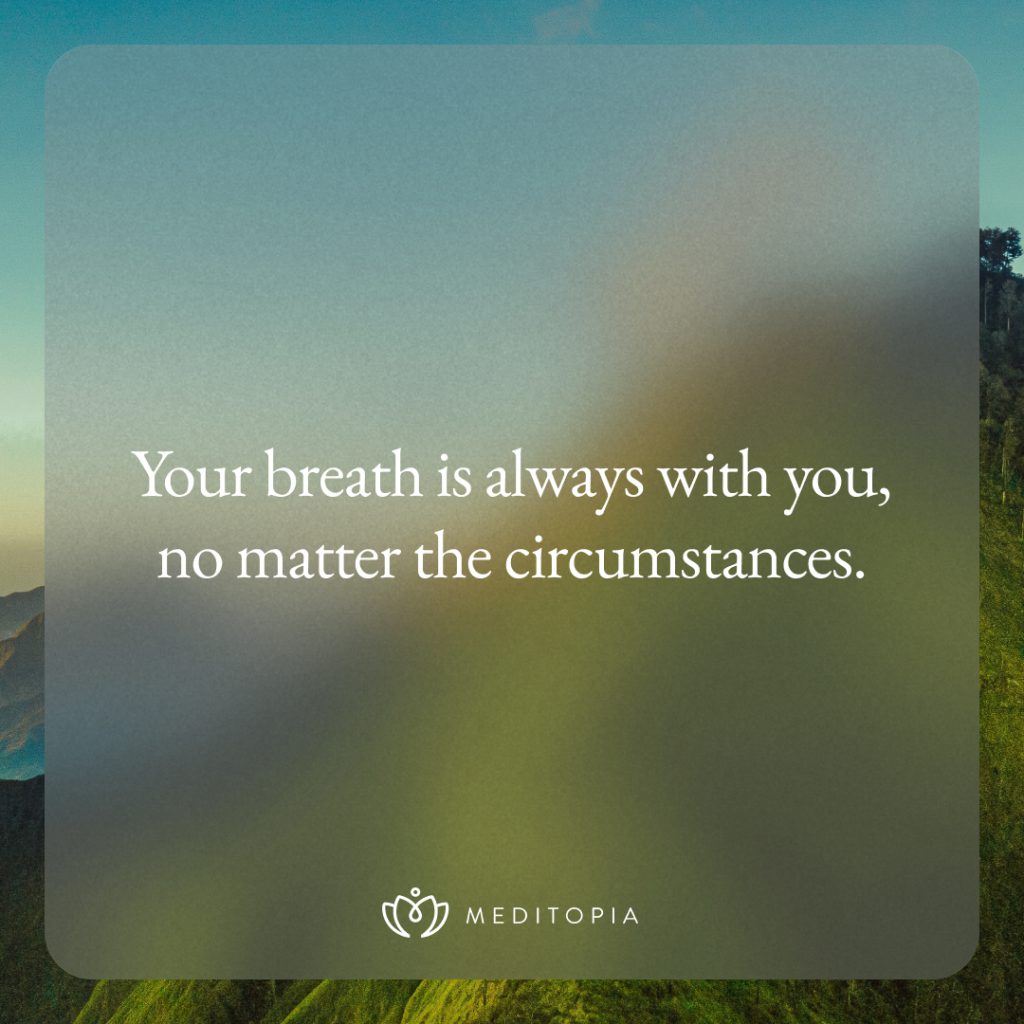Exploring Meditation Terms

Content
Meditation Terms: A Guide
If you’re new to meditation, some concepts you come across may sound confusing and you may encounter expressions that are slightly different from those we use in our daily lives. The main reason for this is that our culture and the busyness of our day-to-day doesn’t always allow for us to be in a meditative state. To meditate, we often need to step aside from the analytical, overthinking, and active mind. While trying to achieve this state, the language we use every day may not always serve our purpose.
That said, as you get deeper into your meditation practice and get to know the structure of the mind, the particular words and phrases used in meditation also gain meaning, becoming much more natural. But until then, if they’re confusing you during your practice, we’ve prepared a guide to help you. We’ll go over some phrases that you may frequently encounter in meditation and hopefully, after reading this article, these expressions will become clearer and you’ll feel more at ease!

Watching the Breath
We generally use the word “watch” with visual senses, like watching a movie. In meditation, however, we want to watch the breath as if we’re looking inside ourselves. You can do whatever this word evokes without thinking about it too much, there’s no wrong way to do this!
For example, imagine watching a swing as it moves back and forth. How would you watch it? Which aspects would you focus on? Feeling your breath enter and exit through your nostrils, bringing your attention to its speed, and observing the way your breath moves through your body is what it means to watch the breath. One of the best objects to focus on is one created by your own mind. So, if certain images come up for you, you can continue to practice with those as your anchor.
Bodily Sensations
Almost anything you feel throughout your body can be called a “sensation.” Your body is constantly hosting different sensations and sending you messages. Therefore, depending on your environment or the way you use your body that day, you may have a different range of sensations.
You may have feel things like warmth, coldness, tightness, softness, or even burning and tingling. What does your body tell you when you bring your attention to it from head to toe? We call the answers you give to this question a sensation.
Feeling Our Emotions
Your body is collecting information from the environment all the time. We then process and interpret this information and draw some conclusions. And, we usually internalize these sensations or emotions through the lens of past experiences.
That may look like saying, “This situation is very annoying,” instead of identifying how we’re feeling. Being able to name or observe feelings allows us to stay away from the pull of the mind and remain present in our bodies. The thought, “Today was such a bad day,” can take us away from the present moment. But, when we say “I feel bad,” we define the emotion we’re experiencing and the opportunity for mindfulness arises. We can then think about what feeling bad corresponds to in our bodies. We can determine what support we need. By realizing our feelings, we can take a closer look at the unmet needs that lie beneath.

Feeling the Breath
When we talk about feeling the breath, we mainly mean the physical sensation of the breath, such as the movement of the chest, swelling of the abdomen, or the air filtering through your nostrils… Apart from these, if there are other bodily or internal changes you feel while breathing, you can observe them. See if you can make space for all that “feeling” the breath evokes.
Watching Thoughts & Emotions
Being able to follow the mind or our thoughts is a delicate balance. Most people believe the aim of meditation is to stop thoughts, or to come to a state of no thoughts at all. However, that’s not the purpose of the practice. What we want to do is just watch the thoughts come and go. When we understand this, our perspective on meditation changes.
Easier said than done though, right? Even if we understand that meditating is a state of observation, doing that in practice is different than just understanding. Think of bringing your attention to an object as tying yourself to a solid rock with rope. When you bring your attention to your breath, your chosen point of focus, it’s as if you are fastening yourself to that moment. While in this state, birds fly around you, clouds float over you, but you stand still, just witnessing as everything passes.
So, watching your thoughts while you keep your attention on your breath or body is just like watching the clouds as they drift on by.
Waves of Breathing & Thinking
Breathing is a continuous movement and when you start observing its patterns, you begin to notice many details about your breathing. In fact, the structure of the breath is like a wave. A wave that rises as you inhale and falls as you exhale. You can visualize it, you can feel it in your body, or there may be other sensations that it evokes within you. Does this wave have a shape, velocity, flat points, or moments of pause? When you start to look at the breath from this perspective, does “breath waves” bring up anything for you?
Just like breathing, you may notice accelerations and decelerations in the flow of your thoughts. Sometimes your mind is like clear water without waves and sometimes your mind is murky and the waters choppy. We can think of this movement of thoughts as “thought waves.”

Bringing Attention to the Breath
The mind is not a fixed structure by nature. Its main function is to keep us alive and create lines of thought, constantly producing ideas about the past and future while doing so. You may be distracted by sensations in the body, the emotions you’re experiencing that day, or other external factors and these distractions can actually make you lose focus. Your mind can sometimes take you anywhere but the present moment.
Each time you realize you’re going through this, try to focus on your breath, as if fastening yourself to a rock. We call this transition “paying attention to the breath” or “bringing your attention to the breath.” Think of your focus and attention as a spotlight. Choose to refocus on your breath over and over again when the light shifts elsewhere.
Witnessing Without Judgment
During meditation, we just want to observe ourselves without getting too deep into our thoughts or interpreting our state of mind. If your thoughts are racing that day, just try to witness that. If you find yourself thinking, “My thoughts should’ve stopped long ago, why is this happening?” it means you’re judging. Such judgments not only take you away from your practice, but also lead the mind to a state opposite of being meditative. Our goal is not to interpret or judge. Our purpose is simply to observe what is going on within us just as it is.
Scanning the Body
Think about a scanning device you might use to scan documents in your daily life, or the scanner at airport security that scans bags. The practice of scanning the body is very similar and involves taking a quick look at your whole body with focused attention.
If you’re instructed to scan your body in a meditation practice, you can do it any way that’s easiest for you. You can move your attention around your body from head to toe or from your feet up. This essentially means examining and observing that area, starting from one end and bringing your attention to each part of your body for a few breaths, seconds, or minutes. It’s crucial not to analyze these observations or make judgments about them. Instead, you just want to notice the sensations or feelings within each part of your body.
Some meditations focus specifically on scanning or relaxing the body. These types of meditations use techniques like scanning from the limbs to the core or examining only certain areas of the body. This way, you can practice deeply focusing on your body as if you were discovering something new.
Softening the Gaze

In some teachings, meditation is practiced with the eyes closed, while in others the eyes are left slightly open. You’ll discover which one works best for you in time, but there are a few things you should consider.
If you keep your eyes open, it shouldn’t be as if you’re looking around with your full attention. Your eyelids should be loose and your gaze should stay in one spot. Our relationship with our sense of sight should be just like when we’re observing our thoughts but not getting swept away with them as they pass us by. There’s a frame that you perceive when your eyes are slightly open, but you don’t have an active relationship with this frame.
Physically, the facial muscles between your eyebrows should be soft and your chin should remain loose. When we say things like, “Soften your gaze,” or, “Keep your gaze soft on one point,” this is what we mean.
Slowing Down & Calming the Breath
We generally look for a space where we can observe without interfering with the flow and speed of our breath in mindfulness practices. However, your breathing or heartbeat may be a little fast at first. Therefore, calming the breath a little makes it easier to meditate.
One way you can slow down your breath is by consciously exhaling for longer periods. Another option when your breath is coming fast and you need some rest is to keep your focus on your breath for a while, just observing its flow. You can also use an anchor other than your breath. For example, a part of the body, an object, or the sounds you hear… You can relax the nervous system and slow your breath down automatically by bringing your focus to any anchor. If you’re in a state of panic and focusing on the breath makes you feel even more anxious, you can continue your meditation with your eyes open and try choosing your anchor from the sensory stimuli around you. You can light a candle and focus on its flame or choose a piece of music, a mantra, or chime to accompany you.
Usually, the slower and deeper the breaths are, the calmer and clearer the mind is. When talking about slowing down the mind, we mean finding our center by anchoring ourselves in the moment and remaining in our practice without forcing ourselves until the thought waves subside. Trying to stop our thoughts often causes more confusion and new chains of thought. When you maintain your focus without getting caught up in these chains and hone in on the stillness of your breath, your mind starts to slow down on its own too.

